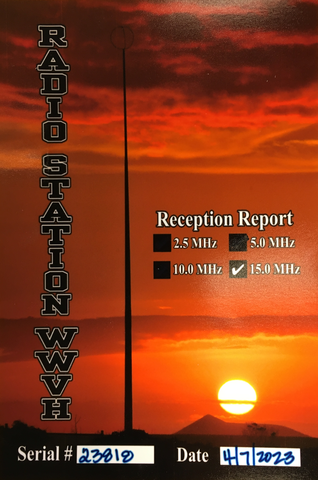
There are dedicated, enthusiastic people in this world who have made a cause (and hobby) out of saying, “I heard that.” NIST is keenly aware.
We’re talking about gathering data on radio propagation, i.e., how far away radio waves can be heard. Specifically, NIST has radio stations in Hawaiʻi and Colorado that disseminate accurate time signals.
Among radio enthusiasts, it’s common practice to report to radio stations when you hear a transmission. The radio station, in turn, will mail a postcard of sorts to the requesting person, acknowledging that their report was received.
QSL cards, as they’re called, are often colorful confirmations that can be collected and treasured. Shown here is a QSL card from NIST’s radio station in Hawaiʻi. Our researchers can record the information on where our transmissions are being heard. That’s helpful for determining if there is an outage in a certain region.
But it’s not just a hobby for our friends in radio. A group of researchers from federal agencies and universities is collecting radio propagation data.
The group, called HamSCI, collects data from all around the world on signals from the NIST radio stations. The researchers aren’t only interested in the presence of a signal itself, but also how distorted it becomes as the radio waves move through the atmosphere and whether multiple signals from our different stations interfere with one another.
Their main goal is to collect the data so that scientists and others can conduct research on it, which means that data can be useful into the future for topics of study that haven’t even been thought of yet.
Follow us on social media for more like this from all across NIST!

